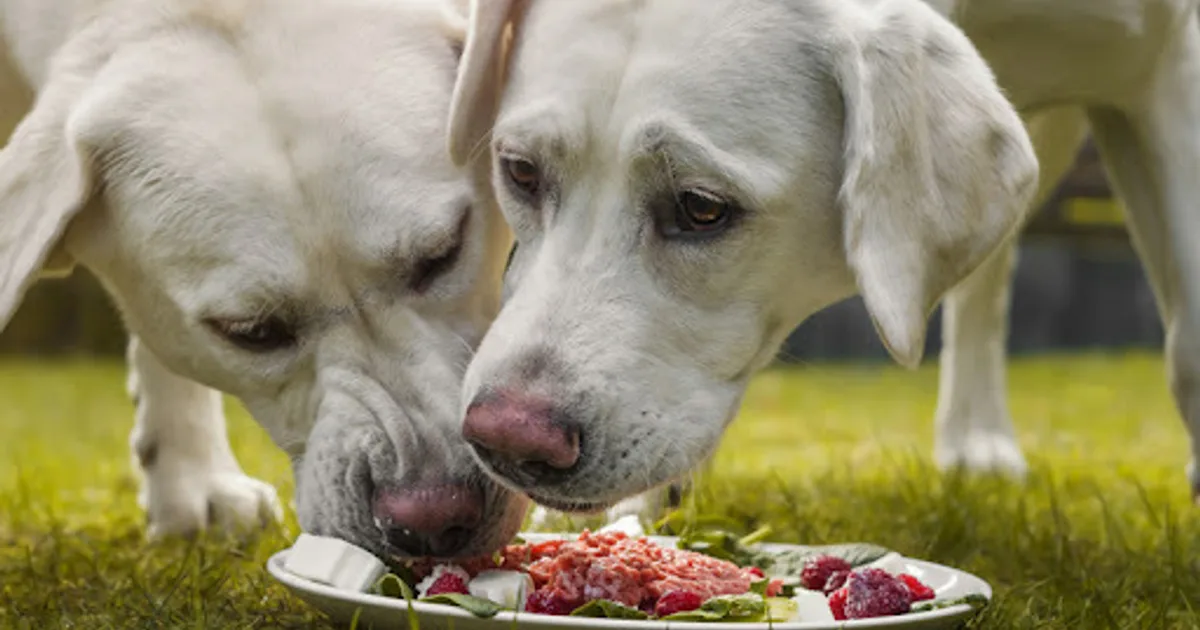As pet parents, we want the absolute best for our furry companions — belly rubs, long walks, cozy naps, and of course, good food. But when it comes to choosing the right diet, things can get confusing fast.
Grain-free? Raw? Wet? Kibble? There are dozens of options, and each one claims to be “the healthiest.”
So how do you know if your dog’s food is actually right for them?
The answer lies in understanding what your dog truly needs — not just what’s trending. Let’s break it down in a simple, straightforward guide to healthy dog nutrition that works for both new and experienced dog owners.
What Makes a Healthy Dog Diet?
Dogs, like humans, need a balanced diet that includes the right mix of:
- Proteins (for muscles and energy)
- Fats (for skin, coat, and overall energy)
- Carbohydrates (for quick energy and digestive health)
- Vitamins and minerals (for immune support, bone health, and more)
- Water (often overlooked, but crucial!)
A healthy diet fuels your dog’s body, supports a shiny coat, keeps their teeth clean, and even helps their mood and behavior.
Know Your Dog’s Needs First
Every dog is different. What works for a Great Dane won’t work for a Chihuahua. When choosing food, consider:
- Age: Puppies, adults, and senior dogs have different nutritional needs.
- Size and breed: Large breeds need joint support and slower growth. Small breeds need calorie-dense meals.
- Activity level: An active dog burns more calories and may need more protein.
- Health conditions: Dogs with allergies, kidney issues, or sensitive stomachs need specialized diets.
If in doubt, your veterinarian is your best resource for personalized advice.
Dry Food (Kibble), Wet Food, or Raw?
Here’s a quick breakdown of the most common dog food types:
1. Dry Food (Kibble)
- Convenient, long shelf life, budget-friendly.
- Supports dental health by reducing plaque.
- Make sure it’s made from real meat (not meat by-products) and avoid artificial colors or preservatives.
2. Wet Food (Canned)
- Higher moisture content — great for hydration and picky eaters.
- Can be more expensive and messier.
- Good as a topper or for senior dogs with dental issues.
3. Raw or Fresh-Food Diets
- Mimics a dog’s ancestral diet (meat, bones, organs, veggies).
- Can be homemade or store-bought (like brands such as The Farmer’s Dog or Ollie).
- Requires care to avoid bacteria and ensure nutritional balance.
Raw diets are controversial — some vets support them, others don’t. Always do your homework and talk to your vet first.
Ingredients to Avoid
Some dog foods are packed with fillers and questionable ingredients. Try to avoid:
- Artificial preservatives (BHA, BHT, ethoxyquin)
- Artificial colors or flavors
- Meat by-products (vague, low-quality protein sources)
- Excessive corn, soy, or wheat (these aren’t “bad,” but they shouldn’t be the main ingredient)
Always check the first few ingredients on the label — they should be whole, recognizable foods (e.g., “chicken,” “beef,” “sweet potato”).
Signs Your Dog’s Food Is Working
You don’t have to guess — your dog will let you know if their food is (or isn’t) a good fit. Here are some positive signs:
- Healthy skin and a shiny coat
- Normal energy levels
- Regular, firm stools
- No itching, hot spots, or excessive shedding
- Fresh breath and clean teeth
- Steady, healthy weight
Signs You Might Need to Switch
On the other hand, these red flags might indicate the food isn’t working:
- Frequent diarrhea or constipation
- Excessive gas or bloating
- Dull coat or dry, flaky skin
- Constant itching or licking
- Vomiting after meals
- Sudden weight gain or loss
If you see any of these, speak to your vet. It may be a simple food sensitivity — or a sign of something more serious.
Marketing vs. Nutrition: Don’t Be Fooled
Pet food marketing can be misleading. Just because a bag says “premium,” “natural,” or “grain-free” doesn’t mean it’s better.
For example:
- “Grain-free” isn’t always healthier — grains like brown rice and oats can be good for dogs.
- “Organic” means better farming practices, but not necessarily better nutrition.
- “Human-grade” is a good sign, but only if the rest of the ingredients are balanced.
Always look for AAFCO (Association of American Feed Control Officials) approval — this means the food meets basic nutritional standards.
Bonus Tips for Feeding Right
- Measure portions to avoid overfeeding (obesity is the #1 dog health issue!).
- Use treats sparingly and make them part of the daily calorie count.
- Introduce new foods gradually to avoid stomach upset.
- Keep clean, fresh water available at all times.
Final Thoughts: Trust Your Gut (and Your Dog’s)
Feeding your dog right doesn’t have to be complicated, but it does require paying attention. Look beyond flashy packaging and focus on what’s actually inside the bowl. Your dog’s coat, energy, digestion, and behavior will tell you everything you need to know.
A healthy diet is the foundation of a long, happy life — and your best friend deserves nothing less.

